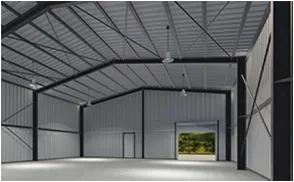- Afrikaans
- Albanian
- Amharic
- Arabic
- Armenian
- Azerbaijani
- Basque
- Belarusian
- Bengali
- Bosnian
- Bulgarian
- Catalan
- Cebuano
- Corsican
- Croatian
- Czech
- Danish
- Dutch
- English
- Esperanto
- Estonian
- Finnish
- French
- Frisian
- Galician
- Georgian
- German
- Greek
- Gujarati
- Haitian Creole
- hausa
- hawaiian
- Hebrew
- Hindi
- Miao
- Hungarian
- Icelandic
- igbo
- Indonesian
- irish
- Italian
- Japanese
- Javanese
- Kannada
- kazakh
- Khmer
- Rwandese
- Korean
- Kurdish
- Kyrgyz
- Lao
- Latin
- Latvian
- Lithuanian
- Luxembourgish
- Macedonian
- Malgashi
- Malay
- Malayalam
- Maltese
- Maori
- Marathi
- Mongolian
- Myanmar
- Nepali
- Norwegian
- Norwegian
- Occitan
- Pashto
- Persian
- Polish
- Portuguese
- Punjabi
- Romanian
- Russian
- Samoan
- Scottish Gaelic
- Serbian
- Sesotho
- Shona
- Sindhi
- Sinhala
- Slovak
- Slovenian
- Somali
- Spanish
- Sundanese
- Swahili
- Swedish
- Tagalog
- Tajik
- Tamil
- Tatar
- Telugu
- Thai
- Turkish
- Turkmen
- Ukrainian
- Urdu
- Uighur
- Uzbek
- Vietnamese
- Welsh
- Bantu
- Yiddish
- Yoruba
- Zulu
Dec . 14, 2024 10:20 Back to list
The Role of Structural Steel in Warehouse Construction
In the ever-evolving landscape of industrial architecture, structural steel has emerged as a foundational material for warehouse construction. With its combination of strength, flexibility, and cost-effectiveness, structural steel is redefining how warehouses are built, thereby facilitating more efficient storage and distribution systems. This article explores the advantages of using structural steel in warehouse construction, as well as the trends and considerations in this vital sector.
Advantages of Structural Steel
1. Strength and Durability One of the primary benefits of structural steel is its exceptional strength-to-weight ratio. This means that steel can support large spans without requiring extensive support columns, allowing for open and flexible warehouse layouts. This is particularly important in modern warehouses that often incorporate logistics operations, which need unobstructed floor space for the efficient movement of goods.
2. Speed of Construction Steel structures can be prefabricated off-site and delivered to the construction site ready for assembly. This prefabrication reduces construction time significantly, which is crucial for businesses that need to minimize downtime and start operations quickly. The rapid assembly process also means that fewer labor resources are needed on site, driving down overall project costs.
3. Sustainability As environmental concerns gain prominence in construction initiatives, structural steel stands out as a sustainable choice. Steel is 100% recyclable, and many steel products are sourced from recycled materials. This aspect of steel construction aligns with increasingly stringent environmental regulations and the growing demand for green building practices.
4. Flexibility and Expandability The modular nature of steel construction allows for easy expansion in the future. As businesses grow, they can simply add on to an existing structure without major overhauls. This flexibility means that capital investments can be more strategically managed, allowing for growth without the burden of substantial renovations.
5. Resistance to Pests and Elements Unlike traditional wood construction, steel is impervious to pests such as termites and does not suffer from decay, making it an ideal choice for warehouses that require long-term durability under various environmental conditions. Steel structures can withstand extreme weather, contributing to a warehouse's longevity and reducing maintenance costs over time.
Trends in Warehouse Construction
structure steel warehouse

As the logistics and distribution industries continue to evolve, several trends are influencing warehouse construction using structural steel
- Automation and Robotics The integration of automation and robotics in warehouse operations is driving the demand for more sophisticated building designs. Modern warehouses must accommodate advanced conveyor systems and automated storage solutions, which can be effectively implemented within steel-framed structures.
- Smart Warehouse Solutions The rise of smart technology is leading to the implementation of Internet of Things (IoT) solutions in warehouses. Structural steel buildings can be equipped with sensors and connected systems that enhance operational efficiency and facilitate real-time inventory management.
- Multi-story Structures To maximize land use in urban areas, more warehouses are being designed with multiple floors. Structural steel's strength allows for the construction of multi-story warehouses that can optimize vertical space as logistics companies seek to drive efficiency in crowded urban centers.
Considerations and Challenges
While structural steel offers numerous advantages, it is essential to consider some challenges as well. The initial cost of steel can be higher than other materials, which may pose a barrier for some businesses. Additionally, proper fireproofing and corrosion protection are critical to ensure the longevity of steel structures, requiring careful planning and investment.
Conclusion
In conclusion, structural steel is indispensable in warehouse construction, offering a combination of strength, durability, and flexibility. As the demands of the logistics industry evolve with technological advancements and changing economic landscapes, structural steel warehouses are positioned to meet these needs effectively. The focus on sustainability and efficiency further solidifies the role of steel in modern construction practices, ensuring that it will remain a prominent choice for future warehouse projects. As businesses look to adapt and thrive, the importance of structural steel in warehouse design will undeniably continue to grow.
-
How Do Prefabricated Steel Structures Transform Modern Construction?
NewsJul.14,2025
-
How Do Prefabricated Metal Buildings Redefine Modern Construction?
NewsJul.14,2025
-
How Do Prefab Insulated Metal Buildings and Steel Structures Revolutionize Modern Construction?
NewsJul.14,2025
-
How Do Pre - Engineered Steel Structures Redefine Modern Construction?
NewsJul.14,2025
-
Advancing Modular Construction with Prefabricated Metal Structures
NewsJul.14,2025
-
Advancing Industrial Infrastructure with Prefabricated Steel Solutions
NewsJul.14,2025
Products categories
Our Latest News
We have a professional design team and an excellent production and construction team.












